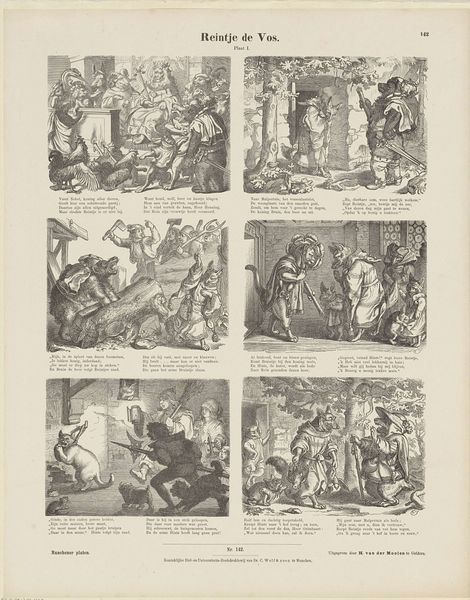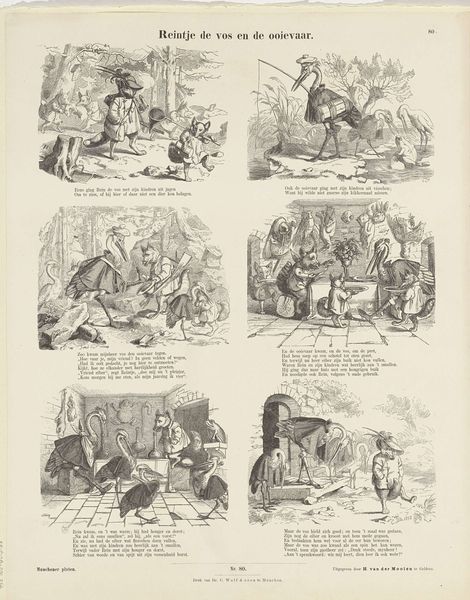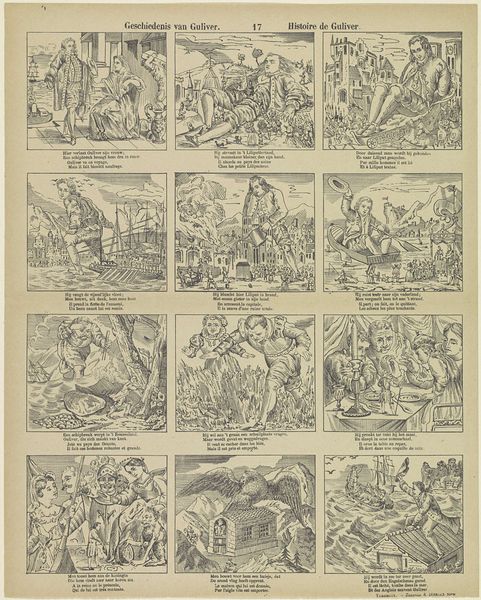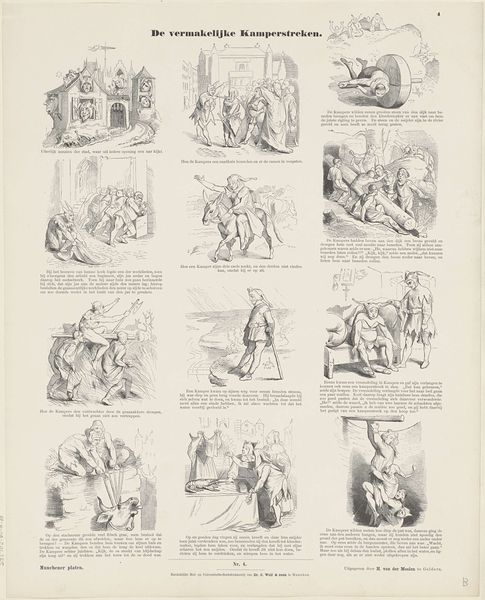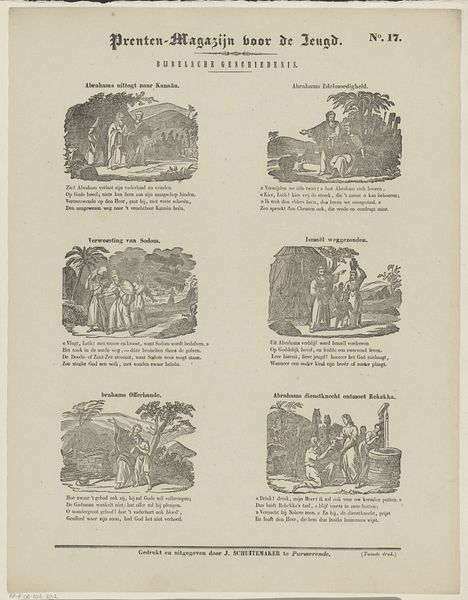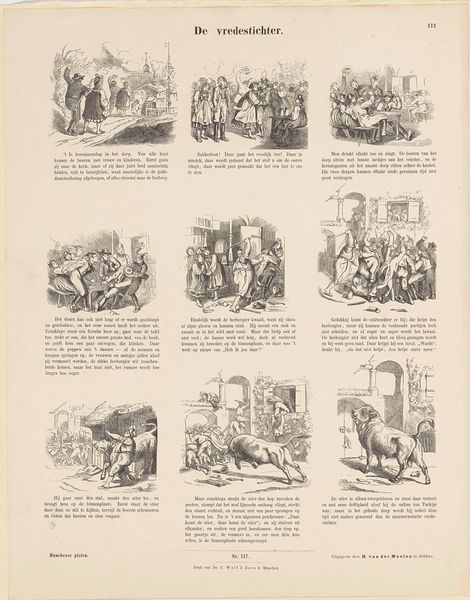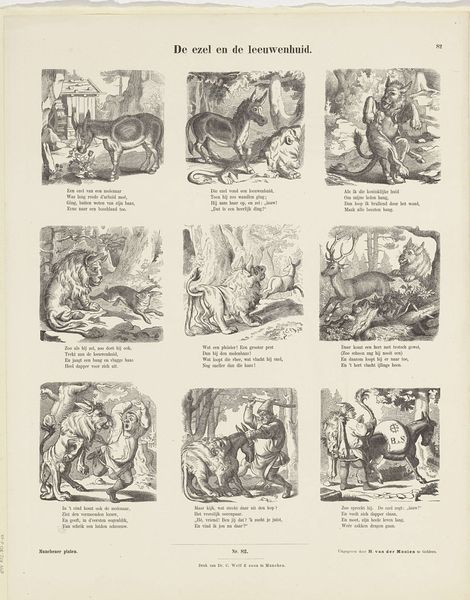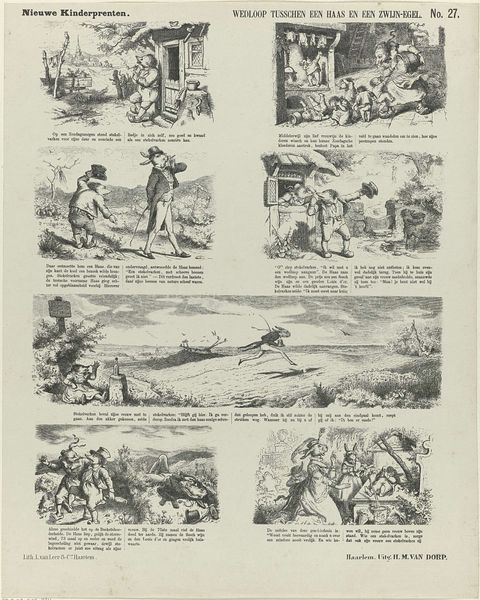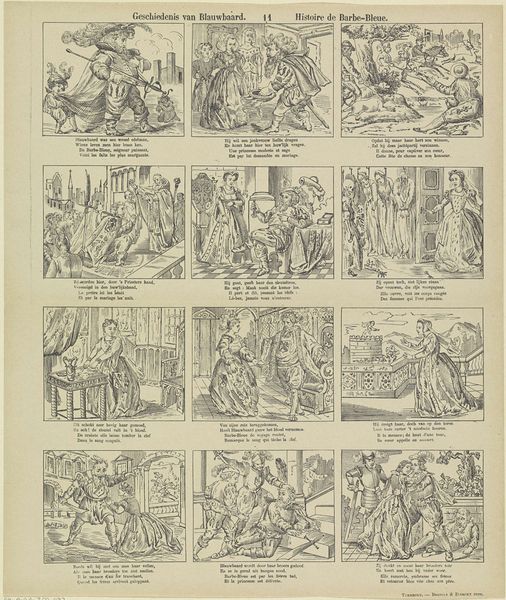
print, woodcut, engraving
#
narrative-art
# print
#
landscape
#
figuration
#
folk-art
#
woodcut
#
line
#
engraving
Dimensions: height 444 mm, width 350 mm
Copyright: Rijks Museum: Open Domain
Editor: So, here we have "The Hare and the Man," an engraving from 1859 by E. Ille. It’s arranged like a comic strip. What jumps out at me is the tension between the human figures and the almost human-like hares. It feels very allegorical, but I'm not sure about what. What's your interpretation? Curator: These sequential images are powerful. Tell me, what cultural memories or narrative structures does the sight of anthropomorphic animals bring to mind? Aesop's fables, perhaps, or maybe Br'er Rabbit? This engraving, given its folk-art style, is tapping into a long tradition of using animal figures to reflect human society and morality. Notice the way the hare and the man interact – are they adversaries, equals, or something in between? Editor: I see them mirroring each other in several panels. But then there are panels showing the hunter with a rifle. It’s this sort of push and pull. Does that mean it's about the human condition or society? Curator: The choice of the hare as the central figure is very specific. Across cultures, the hare appears as a symbol of both vulnerability and cunning. Think of its association with fertility, nature, and the wild, but also with trickery and survival. Consider how these dualities shape our understanding of “man” too – are we the hunter or the hunted, wise or foolish? This engraving encapsulates a larger dialogue. Editor: It's amazing how much symbolism can be packed into what initially appears as a simple, almost child-like narrative. I will never look at a rabbit the same way again! Curator: Indeed! Visual culture acts as cultural memory; images become active participants in the continuous reshaping of our cultural continuity.
Comments
No comments
Be the first to comment and join the conversation on the ultimate creative platform.

